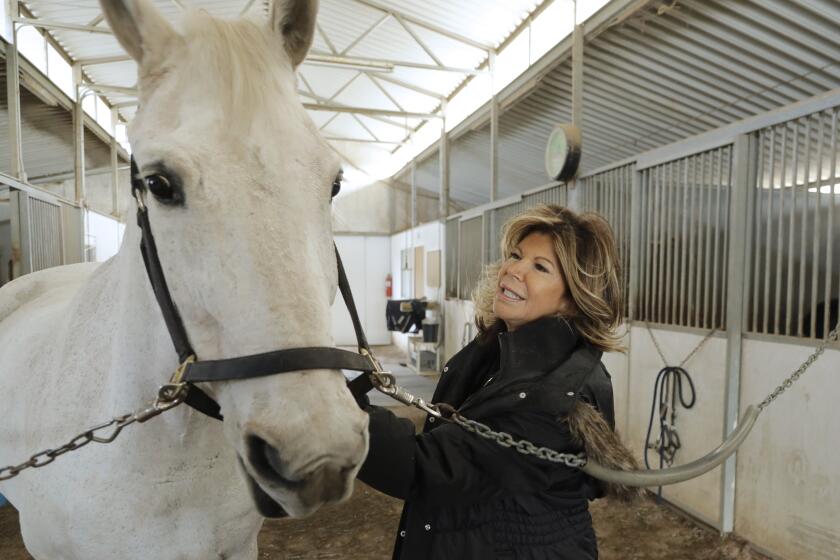
- Share via
On the morning of Nov. 8, 2018, Amy Clark woke up at 6:30.
“I smelled smoke,” she said. Cal Fire was reporting that a blaze had broken out 30 miles away from her home in Paradise, in Northern California.
“In years past,” Amy said, she and her husband, Jim, “had seen smoke on the horizon, and flames.” But they’d never had to evacuate.
Amy went back to bed.
Around 8 a.m., a friend called to say that Paradise was going to be evacuated. “I took a shower,” Amy recalled months later, “while my husband was yelling at me.”
Jim packed a car, gathered their three rescue dogs and checked on their 18 goats. Until a few years earlier, when he searched Craigslist for a herd to clear their newly purchased four acres, Jim’s idea of “pets” had not included ruminants. Now, Feather, the herd queen, was his favorite. She liked to accompany him on his daily trek to the mailbox.
Around 9 a.m., the Governor’s Office of Emergency Services called: Get out now.
Amy, 41, took the dogs and drove down Edgewood Lane, the only way out of their neighborhood. Jim, 55, stayed to feed the goats and fill the water troughs. Minutes ahead of the flames, he jumped into his car. Police directed traffic, but “it was gridlock,” he remembered. “It was backed up for miles.”
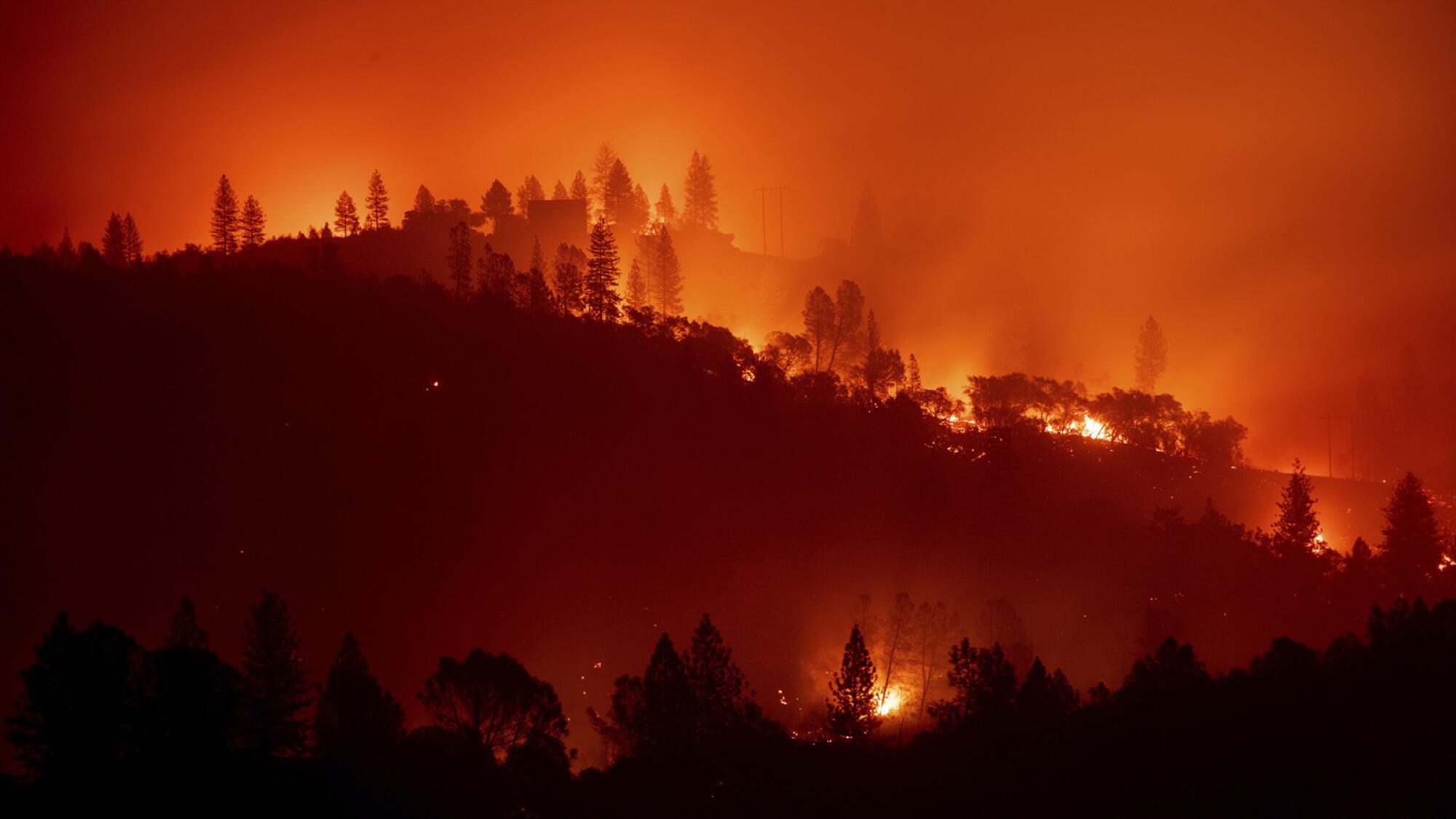
It took hours to get out. “I had to drive through tunnels of flames,” Jim said. “I didn’t know if I was gonna make it.… Several people within eyesight behind me didn’t.... They were burned in their cars.”
The Clarks bounced around for a few nights — Chico to Colfax to Angels Camp — not knowing what happened to their home or their goats. Everyone in Butte County, it seemed, was on Facebook, pleading for help, for information about people, property and animals left behind.
Somebody sent the Clarks a photo of what used to be their valley-view house and garage, both burned into rubble. The image did not show the goat pasture, on the hillside below. The image did not capture Feather, or anything that looked alive.
Every natural disaster is different, but in many ways they’re the same — power failures, debris fields, rampant misinformation. Mix fear, haste and panic with the good intentions of people not always equipped or empowered to help, and you get conflict, sometimes chaos. Rescuing people from imminent danger is primary, but efforts to find, evacuate, shelter and treat their injured animals are also part of the emergency response. Like childbirth, disaster response is messy, painful and loud, but the product often is beautiful.
This is the story of animal emergency response during California’s deadliest blaze, the Camp fire, which killed 85 people and countless animals. This is a story about survival.
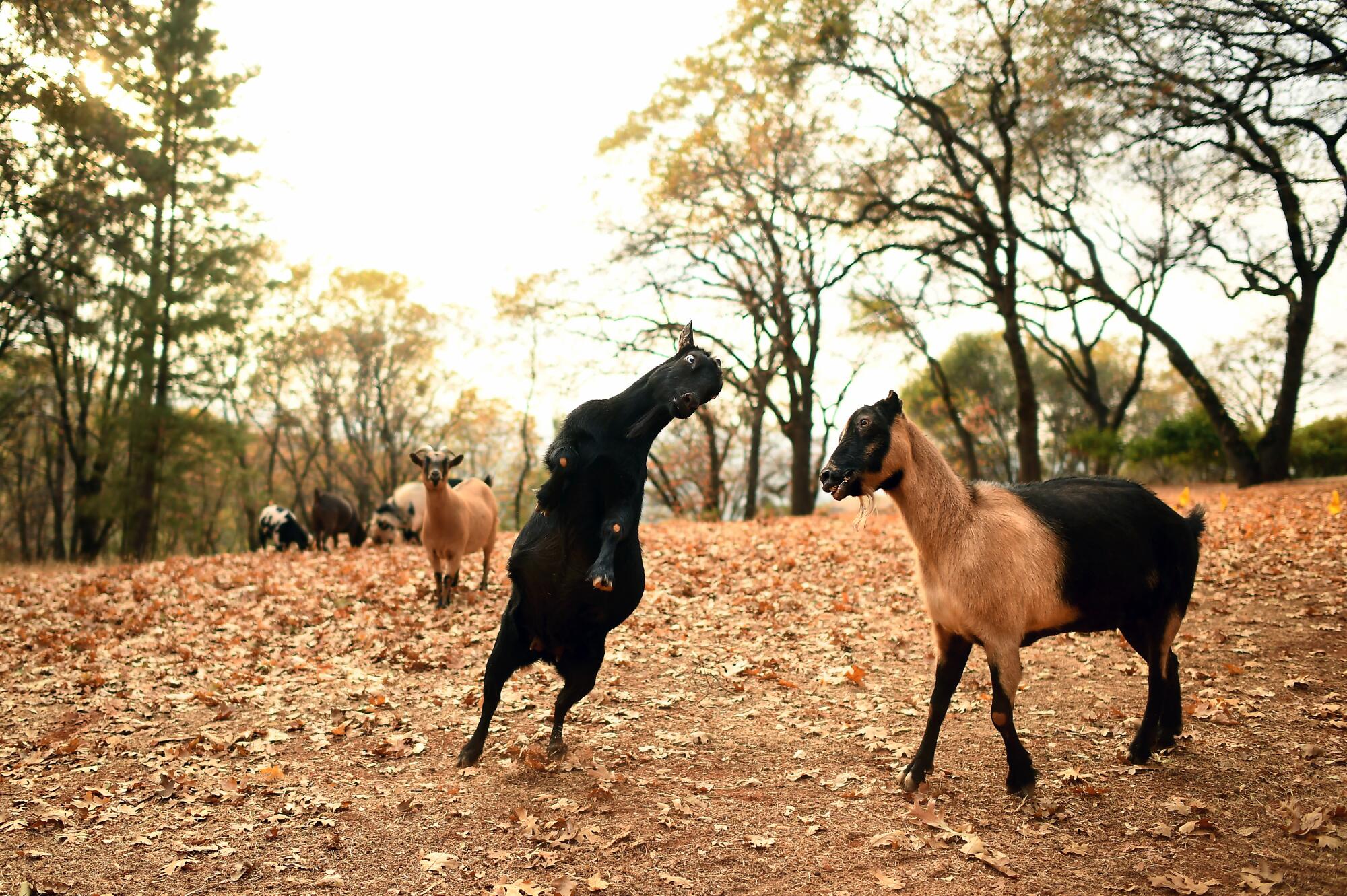
Four agencies representing federal, state, county and municipal interests directed the Camp fire emergency response. Under their command, Butte County Animal Control directed the response for domestic animals and livestock.
Animal Control has established relationships with volunteer groups trained and certified in different aspects of disaster response. Primary among them is the North Valley Animal Disaster Group, a nonprofit in the Sacramento Valley city of Chico. For the Camp fire, Animal Control also sought assistance from national groups, including the American Society for the Prevention of Cruelty to Animals, and the California Veterinary Medical Reserve Corps’ local arm, the Veterinary Emergency Response Team from UC Davis.
“Animal control is a very specialized discipline,” said Ryan Soulsby, the program manager for Animal Control who directed 500 staffers and volunteers during the fire. “It’s a little bit law enforcement, a little bit animal control, a little bit search-and-rescue, and a lot about animal behavior and understanding of how animals respond in distressful situations.”
His teams can handle a feral fox or a friendly Feather, but few agencies or individuals, he said, understand both the exigencies of disasters and the laws of the land where they occur.
“The Camp fire was as bad a place for hazards as I’ve ever been,” said Norm Rosene, president of North Valley Animal Disaster Group. Scores of people wanted to help, but good hearts are not a sufficient defense against formidable danger.
“There were downed power lines, trees still burning,” Rosene recalled. “So you can’t let people that aren’t trained in both fire and in hazards like that go back there.”
Evacuated areas are policed to keep people safe, he said, but also because authorities “don’t want looters, and it was a potential crime scene because there were deaths involved.”
What Rosene calls “convergent volunteers” — ad hoc responders — may work in shelters but not behind evacuation lines.
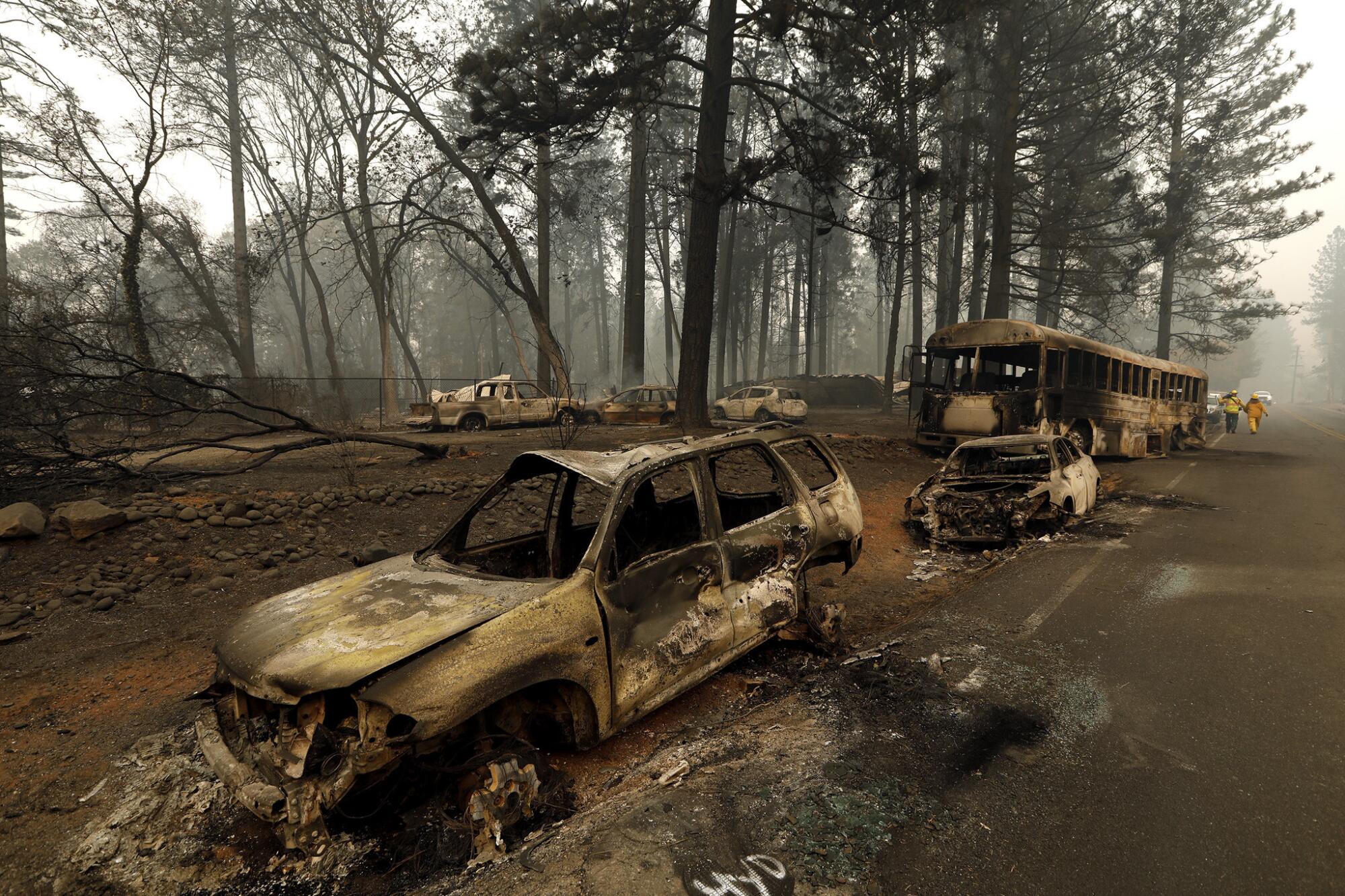
In Butte County, Animal Control requests assistance only from groups that follow national best-practice guidelines, such as Rosene’s. But in some places, structured response is … evolving.
The California Emergency Services Act of 2006 included the California Animal Response Emergency System to standardize animal disaster response statewide. But it remains a theory not within shouting distance of practice. Because California has no such single resource, a coalition of animal welfare organizations statewide is developing training standards for people who want to volunteer during emergencies. Once certified, they would be listed in a database animal disaster managers could tap to request assistance.
Los Angeles County’s emergency plan is complicated — the lead agency for animal response depends on whether the disaster is confined to one of 88 cities, an unincorporated area or both. The county Department of Animal Care and Control provides services for unincorporated areas and nearly half the cities. For the Saddleridge fire in October, for example, L.A. city’s Animal Services Department was the lead agency, assisted by the county.
Requests for animal evacuations in Butte County are mapped and assigned to teams at morning field ops briefings. Teams deliver rescued animals to designated, provisioned shelters. Veterinary personnel triage animals, treat minor wounds and send the seriously injured to the UC Davis animal hospitals. During the Camp fire, even the National Guard deployed under Soulsby’s direction to deliver supplies to shelters and to animals sheltering in place. One general told Soulsby that it was the first U.S. disaster for which the Guard had been assigned to animal resources.
But even a well-oiled machine breaks down when demand exceeds capacity.
Usually, Rosene said, a couple of operators can handle emergency calls to the animal hotline. But in the first three days of the Camp fire, the hotline received 3,500 calls. Countless others went unanswered, including the Clarks’ appeal for help with Feather’s herd. “We ramped up from two to five to 10 to 20” operators, Rosene said. It wasn’t enough.
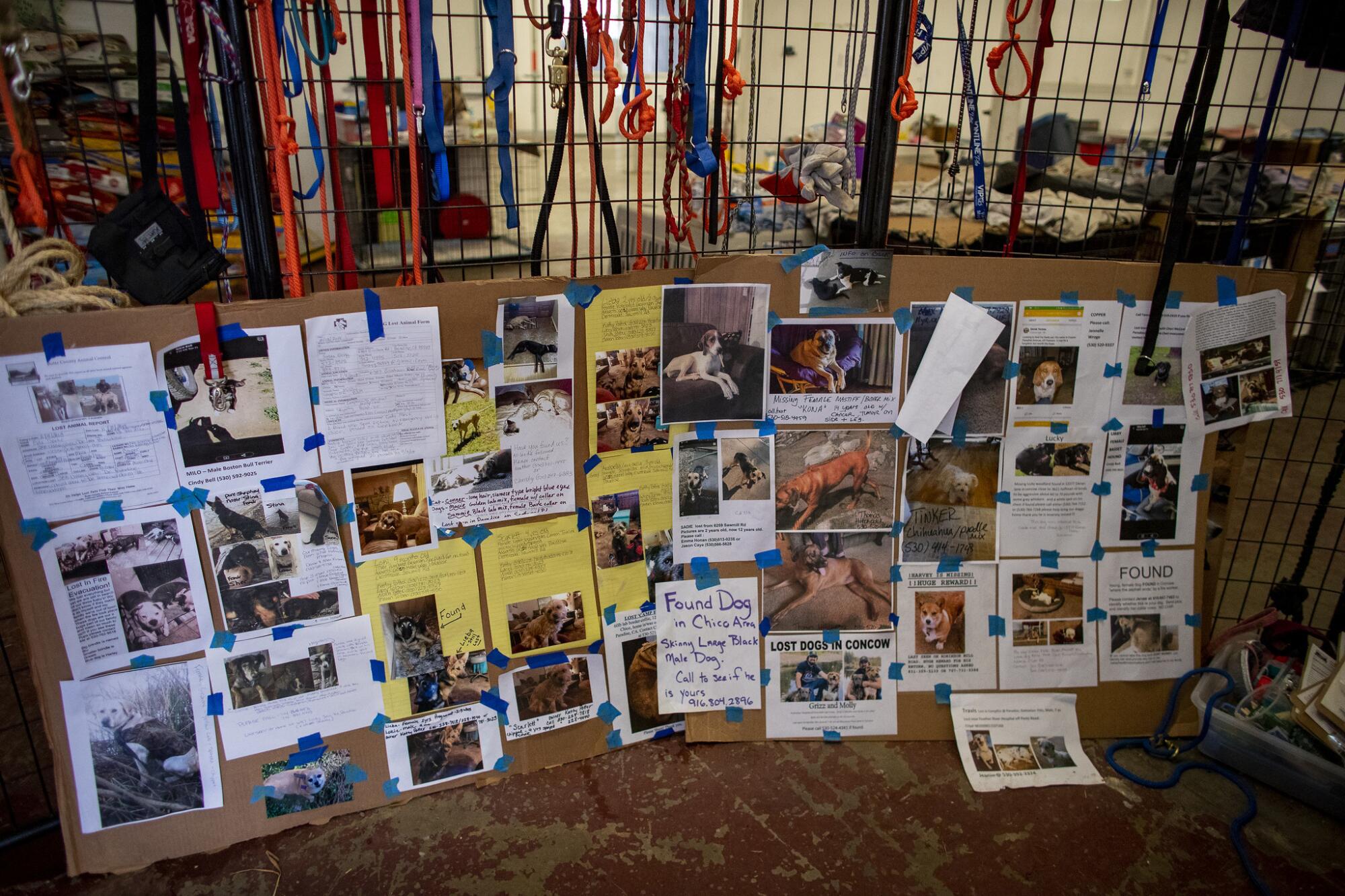
People turned to social media, which streamed information ranging from confirmed fact to pure speculation.
Rosene knew that North Valley Animal Disaster Group was getting hammered on Facebook, with people saying that his group wouldn’t let them help animals in distress. He also knew that most of these people didn’t understand the danger, and that only the lead agencies could send people into restricted areas.
Soulsby understood the frustration. “What we call SUVs — spontaneous untrained volunteers — had the greatest heart I’ve ever seen,” he said. “But with them not being trained under the incident command structure, one, they’re putting themselves at risk for liability and injury, and two, it’s making a lot of extra work for everybody.
“But if they’re in that organized structure … we can utilize their knowledge.”
Tommy the horse was so weak after the Thomas fire, adoption was uncertain. Then he met Anne Scioscia.
Rosene called Soulsby “probably the most experienced animal control manager in the country,” noting that he was in charge during the Oroville Dam failure in 2017, which led to the evacuation of nearly 200,000 people downstream.
This time, it was personal. Soulsby, his wife, four dogs, seven cats, eight chickens and one lizard lived in Paradise. “I had about five minutes to pack and get my animals out with my wife,” he said. “By the time I left, the fire was on my back fence.”
“There was nothing I could do for my home,” Soulsby recalled, his voice quavering. “If it was in ashes, it was in ashes.”
The best thing to do, he said, was to help his scorched community recover its animals.
A few locals weren’t familiar with that concept. One found an abandoned cat and held it for ransom.
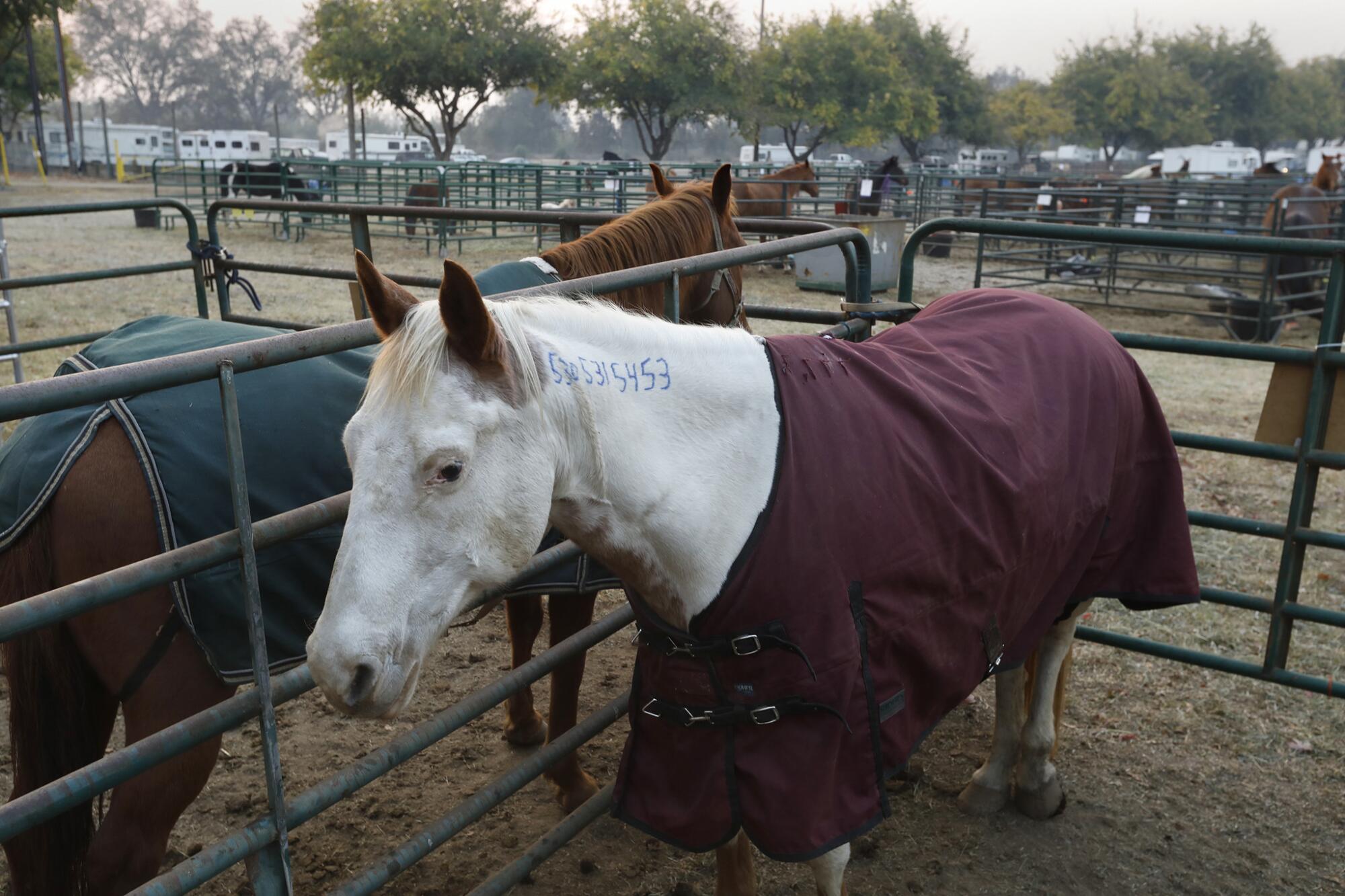
Justin Jones arrived in Butte County on the first day of the Camp fire from his home in Red Bluff, about 50 miles away. A few months earlier, he’d started a Facebook group, Cowboy 911, populated by real-life cowboys offering help to large animal owners in trouble. Jones wasn’t trained in disaster response, nor was Cowboy 911 yet a nonprofit organization, a status it now holds. His introduction to large-scale emergencies had come during the Carr fire three months earlier in Redding.
Unknown to either Rosene’s group or to Soulsby, Jones was about as welcome as a box of matches. But authorities realized that although Cowboy 911 lacked training, it had desperately needed livestock trailers and animal expertise. By the third day of the fire, Jones was an authorized incident commander who could dispatch qualified teams behind the fire lines where evacuated owners had requested help to save their animals.
DJ Longbrake and Jeff Schulz of Medford, Ore., were one such team. She works for the school district, he as an HVAC technician. They spend their extra money on Heavenly Animal Rescue Team and Services, or Harts, their nonprofit for abused and abandoned animals. Certified in fire-line training and equipped with a truck and trailer, they responded to seven wildfires during the summer of 2018. They met Jones during the Carr fire, and by the time they arrived in Paradise, Jones was a new response commander. He assigned Longbrake and Schulz to find Feather’s herd.
It was dicey. Fallen trees and power lines crisscrossed Edgewood Lane, and a singed power pole was still smoking as Schulz maneuvered the 24-foot trailer under a sagging power line with only 2 inches of clearance. They walked 100 yards down the driveway among the rubble.
On the flat spot where Clarks’ house once stood, Schulz said, “There were no signs of life.” He assumed that their mission was about “recovery, not rescue.”
But in the pasture below, they spotted several goats huddled next to a chicken coop. They were stunned to find most of them in good shape; four had burns. One, burned over 75% of her body, cowered in the coop. “Part of her nose was burned off,” Longbrake recalled. She couldn’t see and struggled to breathe.
Leaving water, grain and hay, they secured most of the herd to shelter in place, then led three of the injured animals up to the trailer. Schulz carried the dying goat up the hill as Longbrake held her head up so she could breathe. “She was making gurgling noises,” she said.
They edged the trailer out of the burn zone. En route to the veterinary triage center at the county fairgrounds, Longbrake’s phone searched for a signal.
‘There were tears everywhere. Jim, us, the vets.… It was pretty emotional.’
— Jeff Schulz
Jim Clark’s phone rang. The caller said that Harts rescue, an outfit he’d never heard of, had found his goats, but that some were injured, one of them critically. She told Jim to meet them at the fairgrounds.
At the reunion, Schulz said, the seriously injured goat “was so badly burned that Jim didn’t even recognize her. ‘That’s not my goat,’ he said.”
At the sound of Jim’s voice, she began to bleat.
It was Feather.
“There were tears everywhere,” Schulz said. “Jim, us, the vets.… It was pretty emotional.”
They stabilized Feather for the two-hour drive to the large animal hospital in Davis. Her face was so swollen she couldn’t see. No one thought she would make it.
Longbrake and Schulz returned to the fire zone, where they spent more than two weeks, driving 100 miles a day helping animals and revisiting the Clarks’ property to deliver food and water to the goats.
Jim Clark joined them for several days. They rescued horses, cows, birds, and left food and water for animals they couldn’t catch. Months later, visiting burned-out Paradise, Clark saw five scarred goats he couldn’t catch. He recognized them — he had sold them a year earlier to a man who also lost his home in the fire and had left the area, abandoning his herd. The goats had survived, and somehow had escaped coyotes, mountain lions and starvation. Clark left food for them too.
In mid-November, Rosene’s group found a live turkey on a burned-out property. Volunteers fed and watered it, and at the end of the month, Rosene dropped by. “I swear,” he said, “that turkey had gained weight. He looked huge.”
It was the day after Thanksgiving.
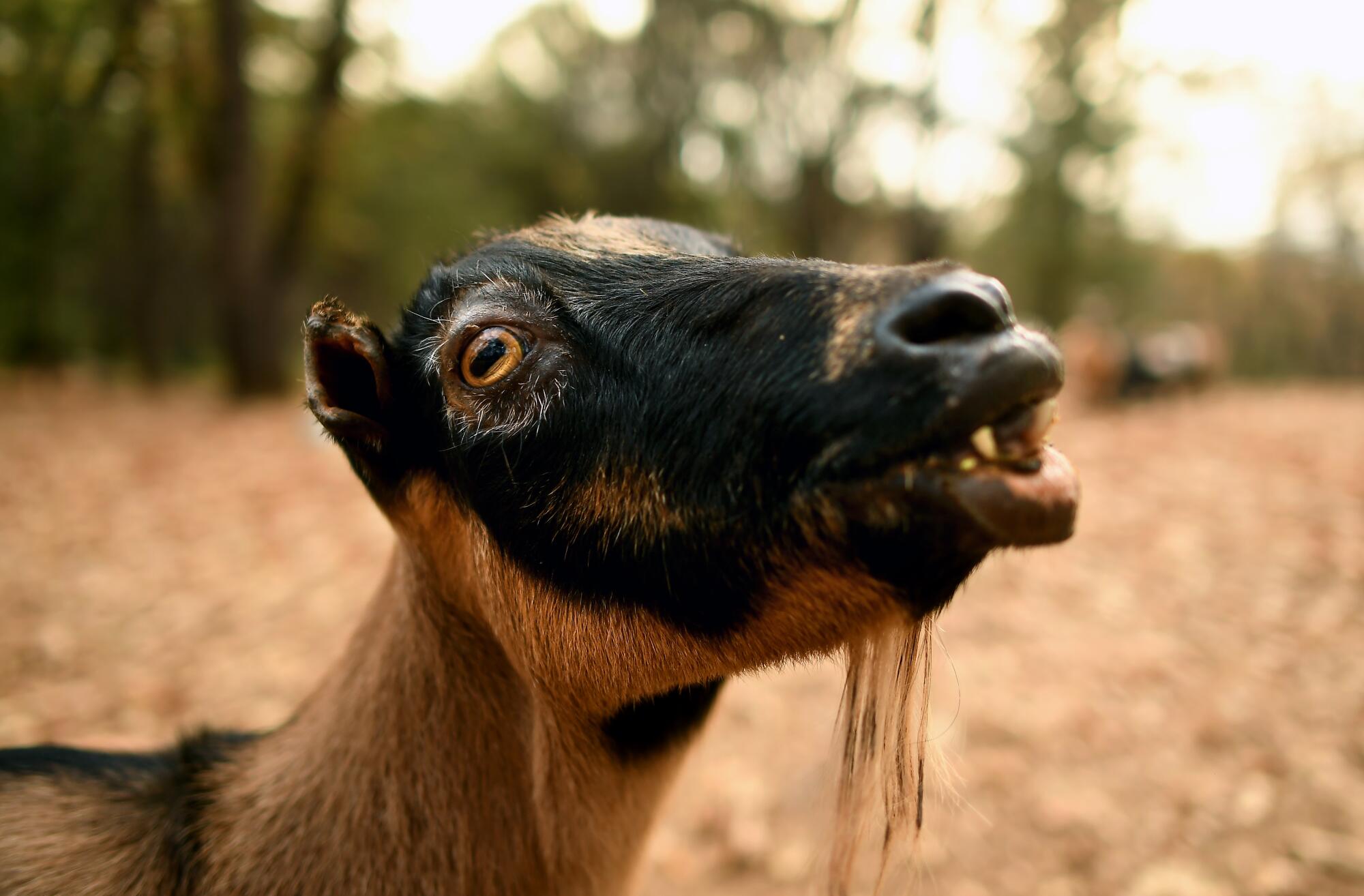
Feather slowly gained strength. Her 70-some fellow hospital burn patients included pigs, horses, geese, koi, a donkey, llama, tortoise and bobcat.
On Nov. 30, 2018, Feather was discharged from the hospital. Until the Clarks resettled, she needed a place to stay that provided ongoing care — her survival was far from certain.
Some disaster victims had relocated to Lucky Ones Ranch, a nonprofit animal sanctuary in Vacaville. Co-founders Thao Le, a 911 police dispatcher in Walnut Creek, and Vince Ones, a Contra Costa County sheriff’s deputy, also volunteer during disasters, collecting and delivering donated supplies to animal shelters.
Le had seen the Clarks’ post for help on Cowboy 911’s Facebook page, followed Feather’s progress and invited her to the ranch after her release from UC Davis. For a couple of months, Le and Ones ferried her around various clinics for treatment.
In February, the whole herd was reunited with the Clarks, who had rented a home with acreage in Auburn. Feather still needed medical care, some of which was provided by Loomis Basin Equine Medical Center, which Le called “the Rolls-Royce of equine hospitals.”
Her treatment for burns and infections — X-rays, blood work, pain meds, CBD oil, cold laser therapy, acupuncture — cost thousands, some of it subsidized by donations Le had secured. Feather, whose leadership the Clarks credit with the herd’s survival, was released from clinical care in June, but she will always be marked by the fire — no ears and a scarred mouth — and need pain meds when the weather’s cold. She’s an old goat, about 14, but she’s still herd queen and as close a companion as any animal in the Clarks’ household.
Six months after the fire, Clark finally rescued three of the abandoned goats he’d seen months earlier in Paradise. As he unlatched the livestock trailer to release them at home in Auburn, they vocalized their distress. In the corral, Feather began to act oddly. Clark opened the trailer, and Feather raced toward one goat in the trailer. She nuzzled it, and the favor was returned.
It was Feather’s daughter.
◆ ◆ ◆
Animal disaster response: By the numbers
Rescued animals sheltered in Butte County facilities during the Camp fire: 4,000 plus
Animals reunited with their owners: 3,700
Animals sheltered in place or at feeding stations: 6,000 plus
Rescued animals sheltered at the Humane Society of Ventura County during the Thomas fire: 321
Animals sheltered at the Humane Society of Ventura County not reclaimed by or reunited with their owners: 2
Chickens, quail and peacocks rescued during the Thomas fire by Ventura County Animal Services: 90 plus
Fowl eventually reunited with their owner: 90 plus
Cost per day for ASPCA to shelter a disaster-rescued dog: $23
Cost of a bale of hay: $15 to $20
Days that a bale of hay feeds one horse: 3
Cost of a 50-pound bag of llama/goat grain: $18 to $20
Days that a bag of grain feeds one goat: 14
Tons of grain delivered daily by the National Guard to livestock sheltering in place during the Camp fire: 20 plus
Daily cost of fuel for a Ford F-250 truck hauling a four-horse trailer evacuating animals during Camp fire: $150
Ransom demanded to return a cat found during the Camp fire: $100
Cats treated at the UC Davis hospital by the Veterinary Emergency Response Team: 33
Veterinarians and veterinary students deployed during the Camp fire as part of the Veterinary Emergency Response Team: 65
Cost of UC Davis Camp fire medical treatment to animal owners: $0
Cost of X-rays, blood work, pain meds, cold laser therapy, CBD oil and acupuncture for Feather the goat: $5,000
Cost of one acupuncture session for a goat: $120 to $140
Cost of Feather’s medical and shelter care to her owners: $0
Cost to Thomas fire-displaced owners to shelter their animals at the Humane Society of Ventura County: $0
Amount Sandra Bullock and Rachael Ray each donated to the Humane Society of Ventura County after fire media coverage: $100,000
Amount donated to two UC Davis veterinary school-affiliated funds for animal disaster response to Camp fire: $571,000
Staffer and volunteer names in the national ASPCA disaster responder database: 5,000 plus
Sources: ASPCA, Ventura County Animal Services, North Valley Animal Disaster Group, Humane Society of Ventura County, Harts Rescue, Justin Jones/Cowboy 911, Thao Le/Lucky Ones Ranch, Butte County Animal Control, UC Davis, Jim Clark, Trina Wood /UC Davis, KQED
More to Read
Sign up for Essential California
The most important California stories and recommendations in your inbox every morning.
You may occasionally receive promotional content from the Los Angeles Times.
